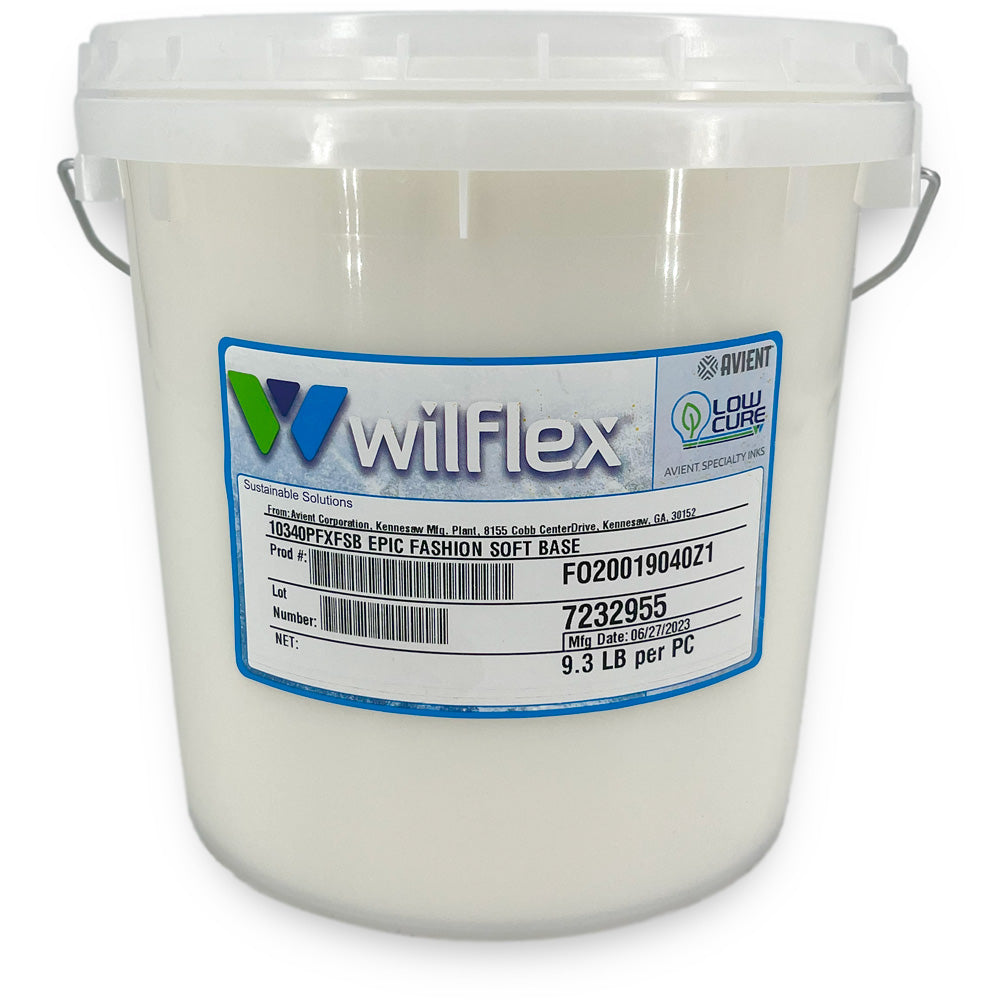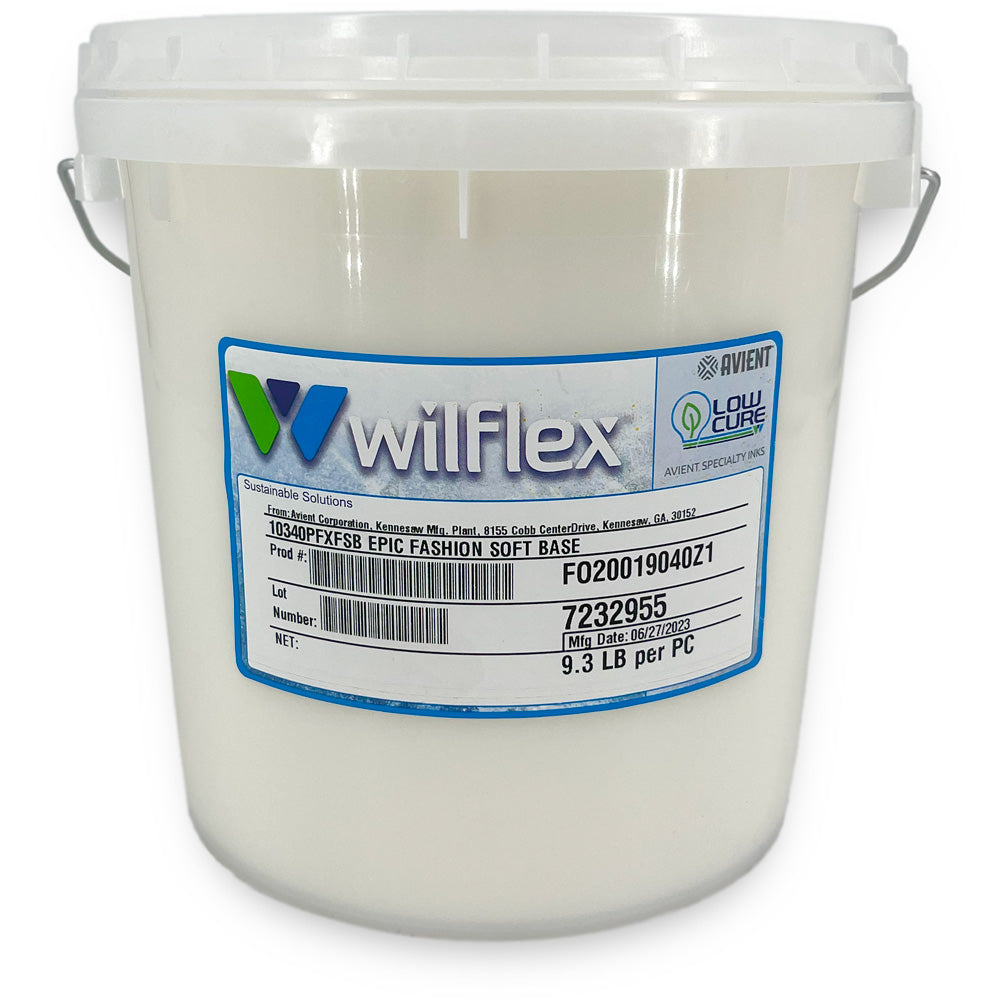
Additional Information
- Simulates waterbase fashion soft finish
- Low cure, save energy
- Will not dry in the screen
- Wet-on-wet printing at high production speeds with exceptional resistance to build-up
- Suitable for printing over seams and stitched areas
- Colors reproduce best on white or light grounds. Produce tone-on-tone colors with dark grounds
Fabric Types
- 100% cotton, blends, some synthetics
Mesh
- Counts: 230-305 t/in (91-120 t/cm)
- Tension: 25-35 n/cm
Squeegee
- Durometer: 70/90/70, 60-70
- Edge: Square, Sharp
- Stroke: Hard flood, Fast stroke
- *Do not use excess squeegee pressure
Non-Phthalate Stencil
- Direct: 2 over 2
- Off Contact: 1/16” (.2cm)
- Emulsion Over Mesh: 15-20%
Flash & Cure Temperatures
- Flash: 220°F (105°C)
- Cure: 270°F (132°C) Entire ink film
Pigment Loading
- N/A
Epic Additives
- N/A
Shipping & Storage
- 65-90°F (18-32°C)
- Avoid direct sunlight.
- Use within one year of receipt
Clean Up
- Ink degradent or press wash
- Use consistent, high-tensioned screen mesh and sharp edged squeegees for best print results
- For Pigment Concentrate and Equalizer systems - mix 50/50 Fashion Soft Base and mixing base per color formula
- For RIO and MX Finished Ink Mixing Systems and Wilflex Standard Colors, use Fashion Soft Base as an additive. Recommend 25% Fashion Soft Base when using as additive. Adjust the % Fashion Soft added based on the strength of the color and color saturation desired
- Mix with highlight white for optimize screen clearance on finer mesh
- Mix with base white (suggest up to 50% by weight) and use as first down to seal fabrics and improve fiber matte down
- Curing is a time and temperature process, a lower oven temperature setting with a slower belt speed while maintaining recommended ink cure temperature is always best to protect fabric, control dye migration and reduce energy consumption
- Fashion Soft Base can be cured between 270°F - 320°F (132°C - 160°C)
- Stir plastisols before printing.
- Do not dry clean, bleach or iron printed area.
- Perform fusion tests before production. Failure to cure ink properly can result in poor wash fastness, inferior adhesion and unacceptable durability. Gel and cure temperatures for ink should be measured using a Thermoprobe device placed directly in the wet ink film and verified on the substrate(s) and equipment to be used for production.
- It is the responsibility of the printer to determine that the correct ink has been selected for a specific substrate and the application processes meet the printer’s customer standards or specifications.
- Curing is the responsibility of each printer to confirm that the print is fully cured. PolyOne’s cure recommendations are not a guarantee or warranty, but merely suggested starting points for curing evaluations as explained above.
- When printing on garments that contain certain dyes, you must pre-test for the potential ghosting. Please refer to our website for more information on this issue.
- Wilflex products have been carefully designed to perform within a given viscosity range, and any dramatic change in viscosity is probable to result in a change in printing characteristics
- NON-CONTAMINATION OF EPIC INKS: Do not mix EPIC inks with inks, additives or extenders from other companies. All buckets, palette knives, stirring apparatus, squeegees, flood bars and screens must be cleaned properly and free of phthalates and pvc containing inks. Non-phthalate emulsions and pallet adhesives must be used. Failure to follow these precautions may cause phthalate contamination in violation of consumer protection laws and regulations.
- Any application not referred in this product information bulletin should be pre-tested or consultation sought with Wilflex Technical Services Department prior to printing.

